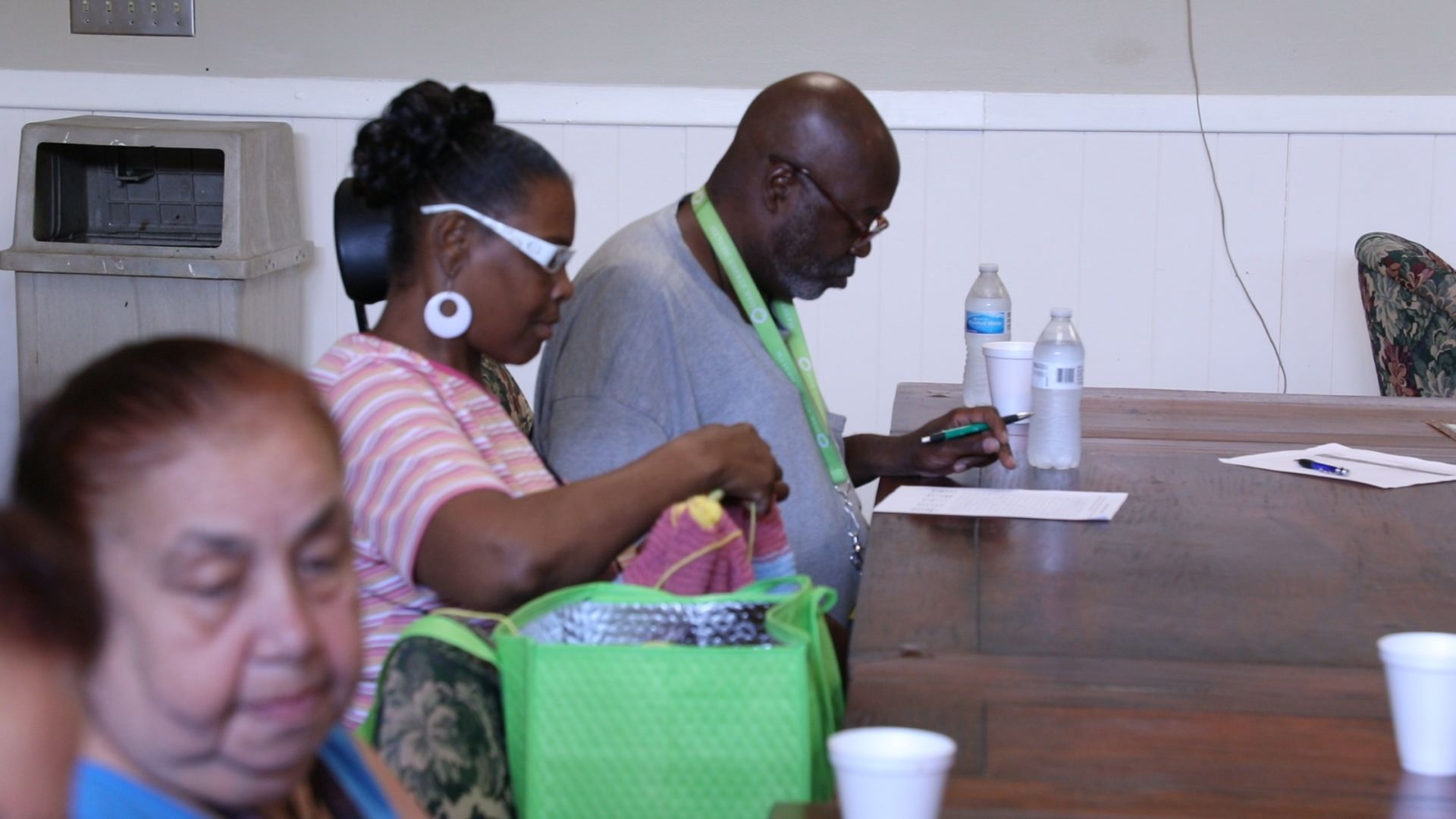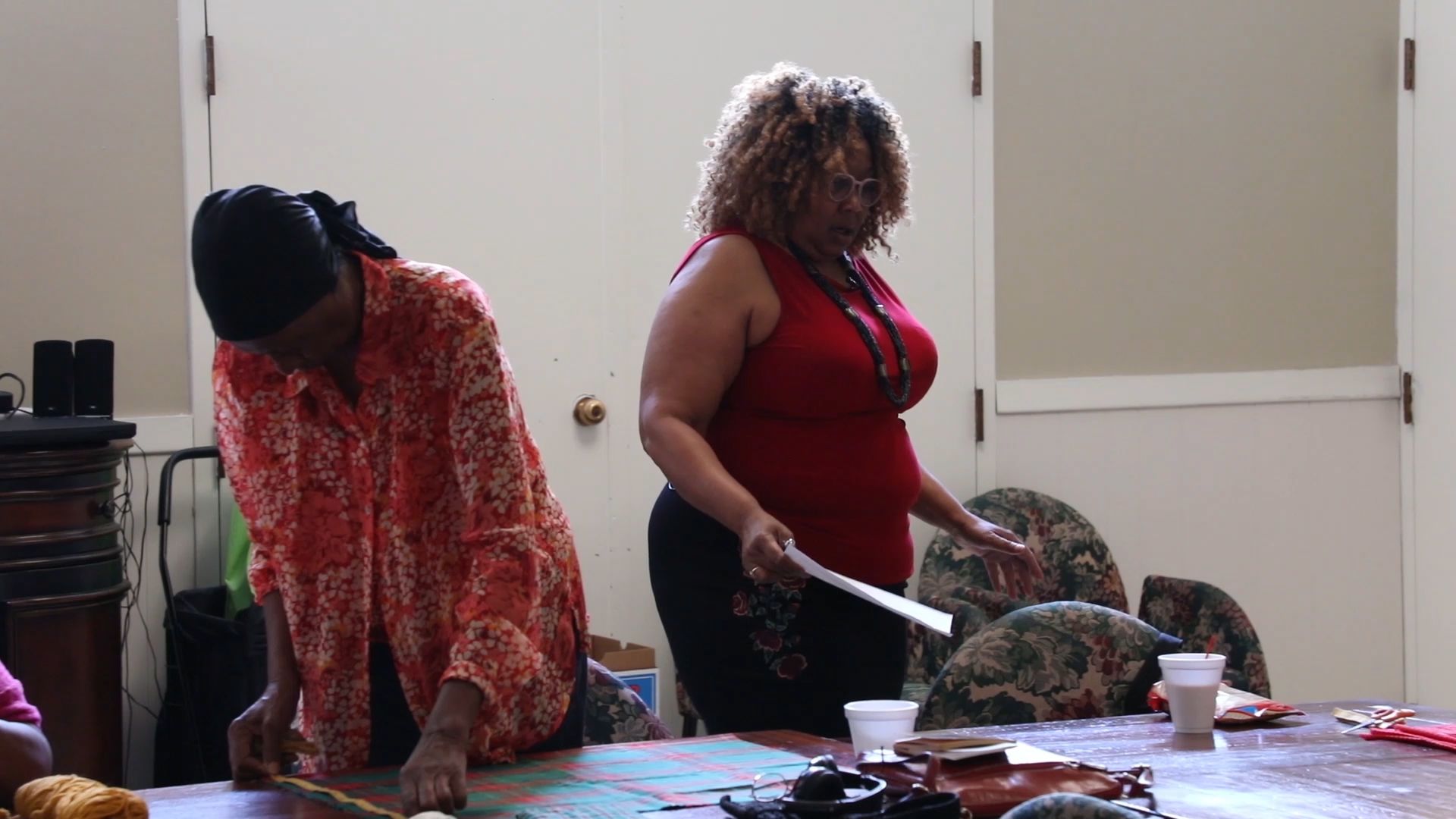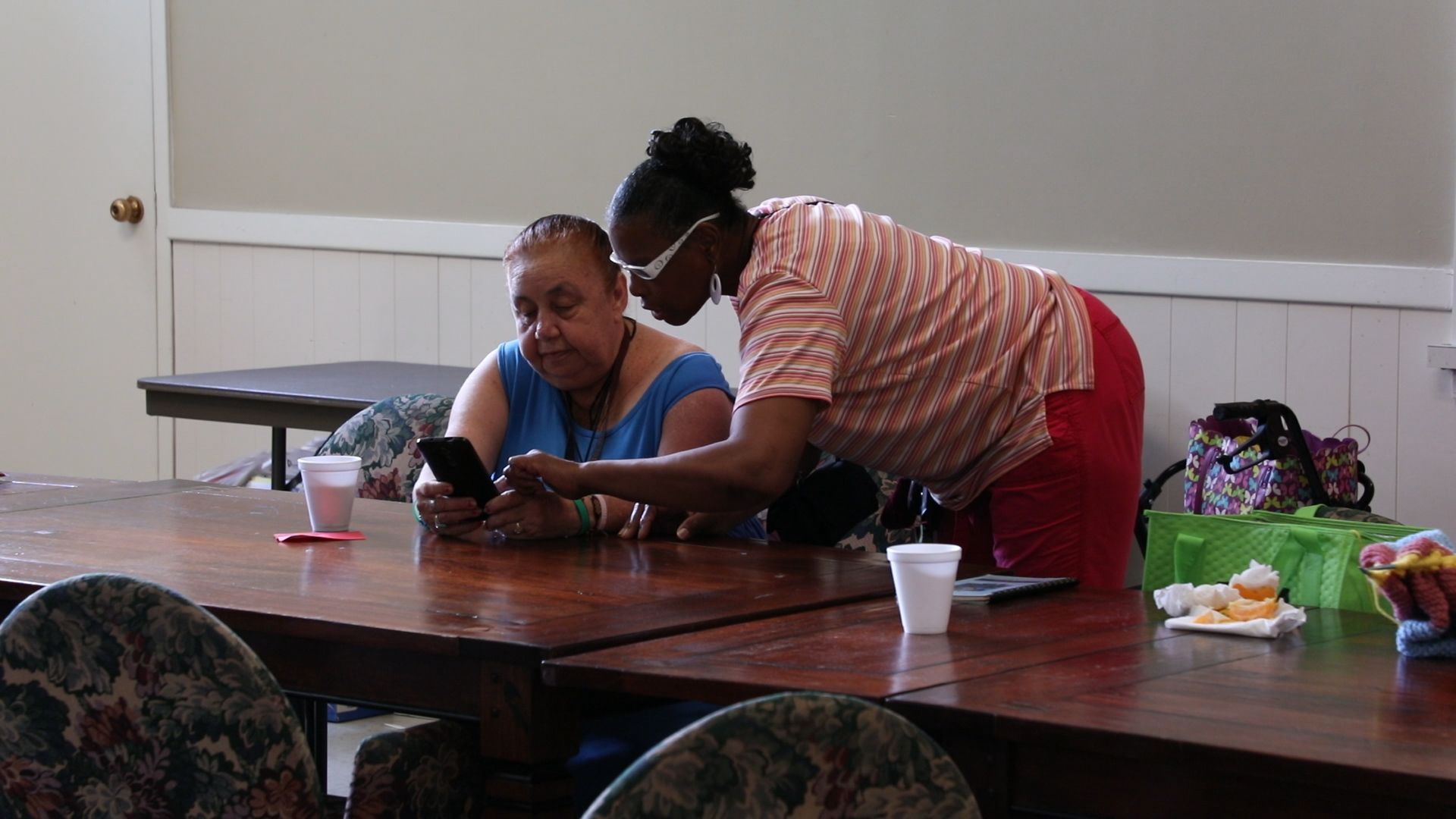Unraveling Social Connections Leads some Seniors to Suicide
![A woman knits during a program for older adults at the May Dugan Center. [Mary Fecteau / ideastream]](./assets/7wuPAwLicu/may-dugan30-1920x1080.jpeg)
Editor’s Note: This story is part of a series focused on the increasing rate of suicides across Ohio. In it, we explore how older adults are particularly vulnerable to suicide, why rural areas have seen more deaths by suicide, and how groups are figuring out how to better tailor their services to those who need help.
If you or someone you know needs help call the National Suicide Prevention Lifeline: 1-800-273-TALK.

More Seniors Taking Their Lives

“We are going to keep all of the same colors together,” said Vanessa Jackson, Senior Wellness Coordinator at the May Dugan Center, a nonprofit health and social services organization on Cleveland’s west side.
Jackson practically yelled the instructions to a group of about 12 seniors so she could be heard over the music — Motown and other oldies — wafting across the room.
Some of the seniors sang along or shimmied in their seats to the music as they worked on crafts to sell at the center’s annual holiday celebration.
A senior sings along to the music as she works on a craft project at the May Dugan Center. [Mary Fecteau / ideastream]
A senior sings along to the music as she works on a craft project at the May Dugan Center. [Mary Fecteau / ideastream]
Jackson started this program about two years ago, for seniors to meet regularly, participate in financial seminars, go on field trips together, and just hang out.
“Being part of this group gives them a way to interact with people — to form a circle of friendship — and have somebody to call on the phone,” she said.
These type of programs can give seniors a sense of purpose and for some it may be their only connection to other people, Jackson said.


This friendship circle group is one way to address the alarming increase in suicide in people over the age of 60, she said.
Suicide is the 10th leading cause of death in the U.S. The rates have risen substantially in the past decade, particularly for seniors.
In 2008, the Ohio suicide rate for people over 60 was 12 per 100,000 deaths, according to a May 2019 report from Ohio Alliance for Innovation in Population Health.
By 2017, the suicide rate for seniors had increased to 19.5 per 100,000 deaths, which is a 57 percent increase in nine years.
The only age group in Ohio that outpaced seniors in percent increase in suicide deaths were teens under the age of 14.
Although that number increased 80 percent over the nine-year span examined by the researchers, the actual number of teens who died was much smaller than the number of people over the age of 60.
“The youth suicide rates are rising as well, and we’re very upset about that and we should be. But the numbers, the actual numbers, are more in terms of seniors."
When seniors complete a suicide the response from society is often muted, she said.
People don’t seem as outraged when it’s an older person. “It’s almost as if we are thinking, 'well they’re seniors,'” Taliaferro said. "They don't matter as much. They're not talked about as much."
ideastream’s in-depth local reporting is made possible by donations from supporters like you.
Join us as a Member now.
ideastream.org/donate

Roberta Taliaferro, Director of Counseling at the May Dugan Center, says people don't seem as outraged when an older person dies by suicide. [Mary Fecteau / ideastream]
Roberta Taliaferro, Director of Counseling at the May Dugan Center, says people don't seem as outraged when an older person dies by suicide. [Mary Fecteau / ideastream]
There are many reasons that seniors consider suicide, but it often boils down to loneliness, isolation, and a sense of uselessness, Taliaferro said.
Many have lost their social connections. They are retired, or have lost their jobs. Their spouses and friends have passed away.
Jackson added that fear of their surroundings can lead seniors to stay inside, rather than branching out and being social.
Vanessa Jackson, Senior Wellness Coordinator at the May Dugan Center, explains that fear of surroundings can lead seniors to isolate themselves.
Vanessa Jackson, Senior Wellness Coordinator at the May Dugan Center, explains that fear of surroundings can lead seniors to isolate themselves.
“I think people don't even realize how much seniors are isolated."
Many seniors in the U.S. live alone, according to a report from the U.S. Census Bureau. About 1 out of 5 adults ages 65 to 74 years old live alone. And that number doubles for seniors 85 or older.
As the baby boomer generation ages, they are quickly swelling the number of people who are 65 and older. According to U.S. census data, older people are projected to outnumber children for the first time in U.S. history by 2030.
As people age, they also begin to grapple with an extreme sense of loss, with much of their life behind them and a perception that not much is ahead, Taliaferro said.
"This past Christmas holiday, I spoke with seniors in our upstairs program about how to get through the holidays, and a lot of what they talked about was the fact that they don’t have a lot of family left,” she said.
Many seniors have adult children, but sometimes their children live in other cities, or they just don’t visit their parents, Taliaferro said.

Seniors at the May Dugan Center work on crafts. [Mary Fecteau / ideastream]
Seniors at the May Dugan Center work on crafts. [Mary Fecteau / ideastream]
Starting over again and trying to make new connections can be very difficult for anyone, but for older adults it is particularly hard, Jackson said.
“As you get older your friends start dying and you [wonder], 'Am I next? They're all gone. I'm the last one. What do I do?'” Jackson said.
“People don't want to go to nursing homes. They do not want to be left there and not have anyone come and visit them," she said.
Seniors also worry about being a burden on their children, and that is sometimes a driver behind thoughts of suicide, she added.
For many seniors, poverty is also a factor that leads to loneliness and isolation, especially for those whose income is just above the federal poverty guidelines, Jackson said.
Vanessa Jackson, Senior Wellness Coordinator at the May Dugan Center, explains that isolation is particularly serious for seniors experiencing poverty.
Vanessa Jackson, Senior Wellness Coordinator at the May Dugan Center, explains that isolation is particularly serious for seniors experiencing poverty.
Some seniors make too much to qualify for help with medical expenses from the Medicaid program. But they are not wealthy enough to pay the deductibles that you have on private insurances.
This leads to worry about racking up huge medical bills.
“In addition to being sick and isolated, now you have all these financial expenses,” she said.
For some it’s just too much.
Helping Older Adults Combat Isolation

Taliaferro pointed to three key factors that protect seniors from thinking about and completing suicide: family, connections, and faith.
The senior friendship circle group at the May Dugan Center is one way, said Taliaferro, to counter at least one of the risk factors: isolation.
Jackson’s approach to helping the 18 seniors in her group is to focus on helping them establish goals for the future and encouraging them to continue to dream.
“People forget that older adults are just young adults who have lived a long time. They want the same things and have the same fears and desires as younger people,” Jackson said.
Recently, she introduced them to a life coach and financial planners, whom she prepped prior.
“I said, I do not want you to deliver some presentation you deliver to poor people. I want you to tell them how they can save some money and prepare for the time when they are not able to really do for themselves,” Jackson said.
As for social media, while some think it exacerbates isolation, Jackson said it's an important part of her strategy with seniors. Smartphones and tablets can help seniors connect to the world, she said.

Social media and smartphones can help connect seniors to the world, Jackson said. [Mary Fecteau / ideastream]
Social media and smartphones can help connect seniors to the world, Jackson said. [Mary Fecteau / ideastream]
“They can have tablets at home and they can FaceTime with one another and talk with their grandchildren and children who live in faraway places," she said.
Many of the seniors are interested in how-to videos available on YouTube and in searching for information online.
During one of many craft-making sessions, Jackson took advantage of an opportunity to encourage the group to pull out their phones and search for the answer to a sewing question that popped up in the conversation.
A senior at the May Dugan Center uses her smartphone to find the answer to a sewing question. [Mary Fecteau / ideastream]
A senior at the May Dugan Center uses her smartphone to find the answer to a sewing question. [Mary Fecteau / ideastream]
“YouTube has a lot of information on how to sew and all of those kinds of things that we are doing in the group. So even looking that up at home and bringing it back into the group kind of takes them out of themselves and gives them a purpose and reduces isolation,” Jackson said.
Learning to use social media for these seniors has a higher purpose. It is providing a sense of connectedness and usefulness, Jackson said.
This craft project also has some tangible benefits. In the past, they've used the money to go on field trips.
“They want to go to Kalahari. They want to go to Amish country. We don't have money in the budget for that,” she said.
This year, they’ve been to the Tall Ships Festival and Black Nativity holiday theater production at the Karamu House.

A senior works on a knitting project. [Mary Fecteau / ideastream]
A senior works on a knitting project. [Mary Fecteau / ideastream]
Jackson said they sold their crafts over the holiday season and made $44. They also received donations to help with the program.
She hopes to use the money to continue helping them feel less isolated and to get them engaged in community events.
Through this project, the seniors are contributing to their own well-being, which is so important to them. It has helped them manage crises, such as having a stroke or a death in the family, she said.
Many of the seniors in the group are low-income and do not have the resources to travel or attend a costly event.
“People who are middle class or upper class have resources to do whatever they'd like. But for low-income seniors, it's very difficult to manage to have any kind of experiences outside of their day-to-day because it takes everything they have to really maintain their lives,” Jackson said.
Another key to ending isolation among seniors would be for groups and organizations to plan more inter-generational events, she said.
There is a perception that seniors are pushed aside, and that society no longer values their contributions after they reach a certain age.
“Older adults want to feel what they offer is respected and honored. When I was coming up, my great-grandmother was alive and she died when I was about four or five. But I still remember a lot of the lessons that she imparted to me,” Jackson said.
One of the best ways to reduce isolation and suicide among seniors is for society to start taking advantage of the history and wisdom they can share with younger generations, she said.
Taliaferro agrees that a shift in thinking is needed in U.S. culture from one focused totally on youth to one that appreciates and values older people as well.
“There's an Irish saying that I love: 'May you live as long as you want to and want to as long as you live,'” she said.



